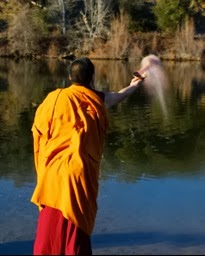To help you answer that question, let's look at two articles I mentioned in the last post, a recent NPR story on computer science for kids and the NAEYC "Young Children" article, "Using Tablet Computers with Toddlers and Preschoolers," to see what's in the popular and professional media and check them against what we know about how young children learn.
Computer Science Learning for Young Children, Silicon Valley Style?
Tablets for Toddlers and Preschoolers?
A few days later, I opened my March 2014 issue of "Young Children, the Journal of the National Association for the Education of Young Children," and turned to the article, "Using Tablet Computers With Toddlers and Preschoolers," by Eugene Geist. Featured is a lesson that included a live university marching band visiting the school and playing for the two to four year olds in a Head Start classroom. Tablet apps and YouTube video follow-up activities were part of the lesson, with a description of the children's interaction with each other using the tablets. There is no question that the lesson was well-crafted. However, wouldn't the follow-up activities be more appropriate for older school-age children, who will do more than swipe, push buttons and quickly memorize predictable results? The latest commercial apps for toddlers and preschoolers are featured on a sidebar.Later in the article, a quote from NAEYC and Fred Rogers Center for Early Learning and Children's Media reminds readers that "media and technology should not replace activities… that are important for children's development. (from the Technology and Interactive Media Joint position statement of NAEYC and the Fred Rogers Center for Early Learning and Children's Media at Saint Vincent College).
What if the follow-up activities left out the tablets?
Bring real instruments to school again, use the variety of music-makers that sit on the shelves in early childhood classrooms, ask parents and community members to share their musical talents. After inspecting and handling real instruments, young students can make their own. Inside or outside, children can march, playing their hand-made creations and take them home to share.Child development professionals and research tell us that preschoolers learn best when engaged in activities that are supported by hands-on, direct and real experiences. The joy of music, movement and dramatic play that follows listening to the marching band and meeting the musicians, will engage all the senses with the real world, respecting children's stages of development with appropriate curriculum and experiences.





































